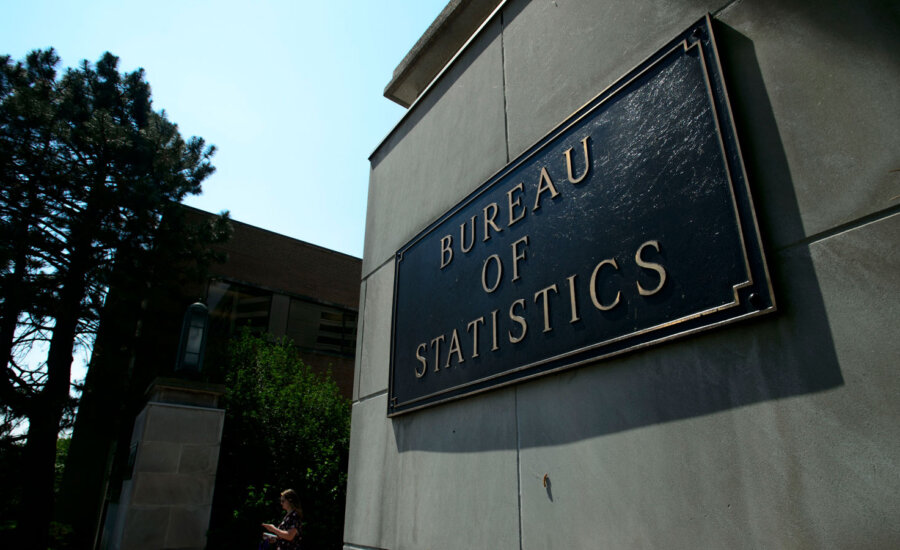What is the GDP in Canada right now?
Canadian economy loses steam after strong start to year, grows 0.2% in February.
Advertisement
Canadian economy loses steam after strong start to year, grows 0.2% in February.

The Canadian economy lost momentum after a roaring start to the year, reinforcing economists’ expectations that the Bank of Canada (BoC) is on track to cut interest rates in the coming months. Statistics Canada reported Tuesday, April 30, that real gross domestic product (GDP) rose 0.2% in February. That followed a 0.5% gain in January.
Gross domestic product (GDP) is a statistic economists use to measure the total amount of goods and services produced in a country during a specific time period, usually a quarter or a year. This number is calculated in one of three ways.
Read the full definition in the MoneySense Glossary: What is GDP?
“Today’s GDP report confirmed our expectations that the January surge in output was temporary, and in no way marked an inflection point for the growth backdrop in Canada that remains very weak,” said RBC economist Claire Fan in a client note.
Looking ahead, the federal agency says its advance estimate for March indicated that real GDP was essentially unchanged for the month.
Based on the preliminary figure, the Canadian economy grew at an annualized rate of 2.5% in the first quarter of 2024. Although the economy continues to expand, economists say the latest data reinforces the idea that the growth is sluggish as higher interest rates weigh on consumer and business spending decisions. That will likely land as good news for the Bank of Canada, which is looking for continued evidence that the economy and inflation are responding to tighter monetary policy.
BoC governor Tiff Macklem said earlier this month that the central bank is already seeing the right conditions to begin lowering its policy rate from 5%. But he said he wants to see those conditions sustained to ensure inflation is in fact heading down to the bank’s 2% target.
“The loss of momentum as the quarter progressed is the bigger takeaway from this report. That puts additional pressure on the BoC to begin cutting as soon as June,” wrote BMO’s Benjamin Reitzes, managing director of Canadian rates and macro strategist.

Get up to 4.00% interest on your savings without any fees.

Lock in your deposit and earn a guaranteed interest rate of 3.55%.

Earn 3.7% for 7 months on eligible deposits up to $500k. Offer ends June 30, 2025.
MoneySense is an award-winning magazine, helping Canadians navigate money matters since 1999. Our editorial team of trained journalists works closely with leading personal finance experts in Canada. To help you find the best financial products, we compare the offerings from over 12 major institutions, including banks, credit unions and card issuers. Learn more about our advertising and trusted partners.
The sluggishness in the Canadian economy is also evident in the labour market, where job creation has lagged population growth. In March, the unemployment rate jumped to 6.1%. Reitzes cautioned in his client note, however, that a June rate cut still depends on April inflation data, which is set to be released in a few weeks.
Canada’s inflation rate came in at 2.9% in March, up slightly from the previous month. Statistics Canada’s report on Tuesday shows 12 of 20 sectors showed growth in February.
Services-producing industries increased 0.2%, helped by the transportation and warehousing sector which increased 1.4%, as rail transportation grew 5.5% with activity returning to normal after freezing temperatures in January in Western Canada.
Air transportation also increased 4.8% in February, driven by growth in international travel as some airlines increased capacity to Asia. Statistics Canada said goods-producing industries were essentially unchanged.
The mining, quarrying, and oil and gas extraction sector grew 2.5% in February as oil and gas extraction increased 3.3%, partially offsetting a contraction in January. Mining and quarrying (except oil and gas) rose 1.9%. The utilities sector contracted 2.6%, while the manufacturing sector fell 0.4%.
Share this article Share on Facebook Share on Twitter Share on Linkedin Share on Reddit Share on Email